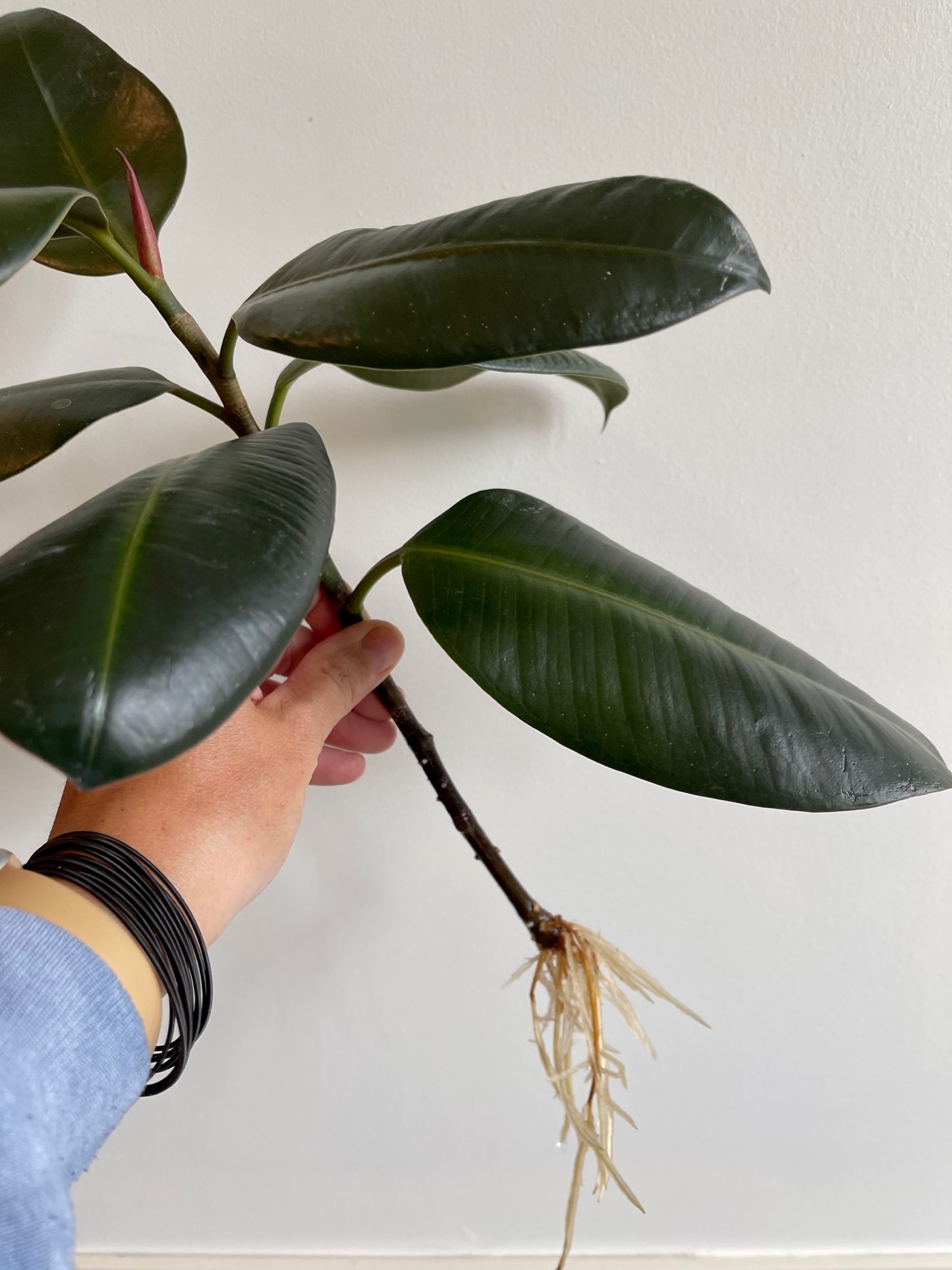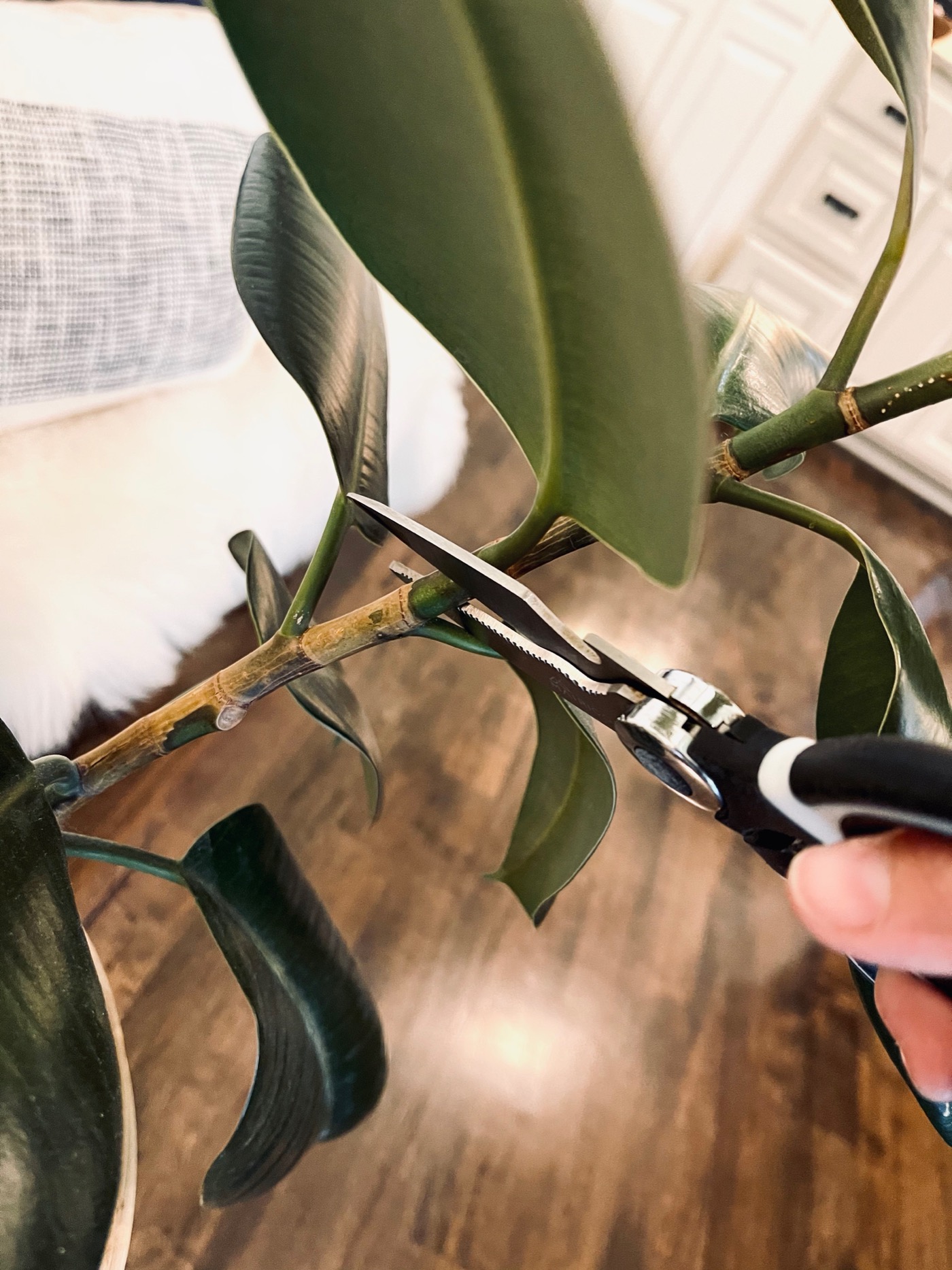Introduction How To Propagate Rubber Plant In Water in the year 2023 Learn more here!
Have you ever wanted to propagate your rubber plant but didn't know where to start? Well, you're in luck because propagating a rubber plant in water is easier than you think! Not only is it a fun project to do, but it's also a great way to expand your plant collection without having to buy new ones.
The Pain Points of Propagating Rubber Plant in Water
One of the challenges of propagating a rubber plant in water is the patience it requires. It can take weeks or even months for the roots to develop, and it's easy to get discouraged when you don't see any progress. Another issue is the water quality, as contaminated water can harm the cutting and hinder root growth. Lastly, selecting the right cutting is crucial, as using a poorly chosen stem can lead to a failed propagation.
How to Propagate Rubber Plant in Water
The first step in propagating a rubber plant in water is selecting a healthy stem to cut from the mother plant. Choose a stem that is free from diseases, pests, or damages and has at least a few leaves attached to it. Using a clean pair of scissors, cut the stem at a 45-degree angle and make sure the cutting is at least 6 inches long.
Next, fill a glass jar with clean, filtered water and place the rubber plant cutting inside, making sure that at least two nodes are submerged in the water. Nodes are the small, bump-like structures on the stem where leaves emerge.
Place the jar in a bright, warm spot away from direct sunlight and change the water weekly to prevent it from becoming contaminated. Be patient and wait for roots to grow, which could take anywhere from a few weeks to several months depending on the environmental conditions.
Summary of Propagating Rubber Plant in Water
Propagating a rubber plant in water is an exciting project that requires attentiveness, patience, and proper preparation. It involves selecting a healthy cutting, placing it in clean water, and waiting for the roots to grow. With proper care and attention, you can propagate your rubber plant in water and have a new plant to add to your collection.
My Experience Propagating Rubber Plant in Water
I propagated my rubber plant in water a few months ago, and it was a great success. It took almost two months for the roots to grow, and during that time, I made sure to change the water weekly and placed the jar in a bright spot near a window. Once the roots grew to about an inch long, I transplanted the cutting into a pot with soil, and it has been thriving ever since. It's incredibly rewarding to see the progress, and I highly recommend trying it out!
Troubleshooting Common Issues
If you notice the leaves on the cutting turning yellow or brown, it could be a sign of inadequate water quality, overwatering, or underwatering. Ensure that you change the water regularly, and do not let the cutting dry out. Additionally, make sure you're using a healthy cutting with a few leaves, as a stem with no leaves is unlikely to grow roots.
How Long Does It Take for Rubber Plant Cuttings to Root?
The time it takes for rubber plant cuttings to root can vary depending on the environmental conditions. On average, it takes around 4 to 6 weeks for roots to develop in clean water. However, it can take even longer than that, so be patient and keep an eye on the cutting.
Can You Propagate Rubber Plant in Water Year-Round?
Yes, you can propagate a rubber plant in water year-round as long as the environmental conditions are suitable, such as warm temperatures and bright, indirect light. However, the best time to propagate a rubber plant is in the spring when the plant is actively growing.
Question and Answer (FAQ)
Q: Can I propagate a rubber plant from a single leaf in water?
A: No, a rubber plant cannot be propagated from a single leaf in water. You need a stem with at least one node and a few leaves attached to it for successful propagation.
Q: Can I use tap water to propagate my rubber plant in water?
A: It's not recommended to use tap water to propagate your rubber plant in water, as the chlorine and fluoride in the water can harm the cutting and prevent root growth. Use clean, filtered water instead.
Q: Is it normal for the leaves to wilt during propagation?
A: It's normal for the leaves to wilt and droop slightly during propagation, as the cutting is undergoing stress and is extracting nutrients from the leaves. However, if the leaves continue to wilt or turn yellow, it could be a sign of inadequate water quality or other issues with the cutting.
Q: Can I propagate a rubber plant in water without rooting hormone?
A: Yes, you can propagate a rubber plant in water without rooting hormone, as it's not necessary but can expedite root growth. With proper care and patience, your cutting will develop roots without additional aids.
Conclusion of How to Propagate Rubber Plant in Water
Propagating a rubber plant in water is an excellent way to expand your plant collection and a fun project to try out. It can be challenging and requires patience, but with proper preparation and care, you can successfully propagate your rubber plant. By selecting a healthy stem, using clean water, and waiting for the roots to grow, you can have a new rubber plant to enjoy in no time!
Gallery
How To Propagate A Rubber Plant - Life Love Larson

Photo Credit by: bing.com / propagate lifelovelarson
Rubber Plant Propagation - Teak And Terracotta
Photo Credit by: bing.com / propagation teakandterracotta
Can You Propagate Rubber Plant In Water? - Indoor Plants World

Photo Credit by: bing.com / propagate rubber plant water plants effective soil outlined specific achieved methods definitely usually follow below when
Plant Propagation For Kids - My Tasteful Space | Propagating Plants

Photo Credit by: bing.com / propagation propagating cutting mytastefulspace ficus elastica tasteful trauer tropics
How To Propagate A Rubber Plant - Life Love Larson

Photo Credit by: bing.com / propagate lifelovelarson

Post a Comment for "Introduction How To Propagate Rubber Plant In Water in the year 2023 Learn more here!"